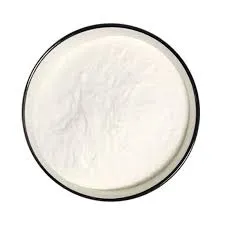
Dec . 18, 2024 23:16 Back to list
methyl hydroxyethyl cellulose
Understanding Methyl Hydroxyethyl Cellulose Properties and Applications
Methyl hydroxyethyl cellulose (MHEC) is a versatile and essential ingredient found in various industries, particularly in construction, pharmaceuticals, and cosmetics. As a derivative of cellulose, it combines the properties of methyl cellulose and hydroxyethyl cellulose, allowing it to perform a wide range of functions. This article will explore the characteristics, production methods, and applications of MHEC, highlighting its significance in modern applications.
What is Methyl Hydroxyethyl Cellulose?
MHEC is a water-soluble polymer synthesized from cellulose, a natural polymer derived from plant cell walls. The modification process involves methylation and hydroxyethylation, resulting in a product that exhibits enhanced solubility, improved thickening properties, and excellent film-forming abilities. Due to its adhesive properties, MHEC plays a crucial role in various formulations.
Properties of MHEC
1. Solubility MHEC can dissolve in cold or hot water, producing a viscous solution. This property is beneficial for applications where a thickening agent is required.
2. Thickening Agent MHEC is often used to increase the viscosity of water-based formulations. Its ability to enhance the texture and stability of products makes it a popular choice in various industries.
3. Film Formation When dried, MHEC forms a flexible, translucent film. This feature is particularly useful in cosmetic products that require a barrier to maintain moisture.
4. Controlled Release In pharmaceutical applications, MHEC serves as a matrix for controlled drug release, ensuring a sustained release of active ingredients over time.
5. Non-toxic and Biodegradable As a cellulose derivative, MHEC is non-toxic and environmentally friendly, making it suitable for use across a range of products from food to personal care.
methyl hydroxyethyl cellulose

Production Methods
The production of MHEC typically involves the modification of cellulose through alkaline hydrolysis—a process that introduces methyl and hydroxyethyl groups onto the cellulose backbone. The degree of substitution (the number of methyl and hydroxyethyl groups added) affects the properties of the final product, including solubility, viscosity, and gel-strength. The controlled conditions during the modification process ensure high purity and consistent quality, which are critical for industrial applications.
Applications of Methyl Hydroxyethyl Cellulose
1. Construction Industry MHEC is widely used as a thickening agent and water-retention additive in cement-based formulations, such as tile adhesives and grout. It helps improve workability and adhesion while prolonging the open time for application.
2. Pharmaceutics In the pharmaceutical industry, MHEC is utilized as a binder in tablet formulations and as a gelling agent in topical applications. Its ability to control the release of active ingredients makes it invaluable in drug delivery systems.
3. Cosmetics and Personal Care MHEC enhances the texture and stability of cosmetic products, including creams, lotions, and shampoos. It acts as a thickening agent, emulsifier, and stabilizer, contributing to the overall aesthetic and performance of personal care products.
4. Food Industry In food applications, MHEC serves as a thickener and stabilizer for sauces, dressings, and dairy products. Its functionality enhances mouthfeel and texture, catering to consumer preferences for quality and consistency.
5. Agricultural Applications MHEC is increasingly used in agriculture as a dispersant and thickening agent in pesticide formulations. It helps improve the distribution and adherence of active ingredients on plant surfaces.
Conclusion
Methyl hydroxyethyl cellulose is an essential ingredient with a wide range of applications across various industries. Its unique properties, including solubility, thickening capabilities, and film-forming characteristics, make it a valuable component in products ranging from construction materials to cosmetic formulations. As industries continue to innovate and seek sustainable solutions, MHEC will likely remain a vital ingredient due to its functionality and environmental compatibility. Whether in improving the texture of a body lotion or enhancing the performance of a tile adhesive, MHEC proves to be an indispensable part of modern product formulation.
-
Versatile Hpmc Uses in Different Industries
NewsJun.19,2025
-
Redispersible Powder's Role in Enhancing Durability of Construction Products
NewsJun.19,2025
-
Hydroxyethyl Cellulose Applications Driving Green Industrial Processes
NewsJun.19,2025
-
Exploring Different Redispersible Polymer Powder
NewsJun.19,2025
-
Choosing the Right Mortar Bonding Agent
NewsJun.19,2025
-
Applications and Significance of China Hpmc in Modern Industries
NewsJun.19,2025







